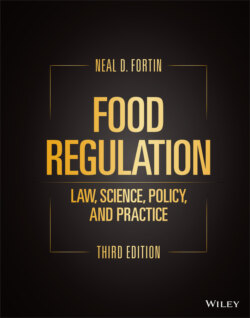Читать книгу Food Regulation - Neal D. Fortin - Страница 21
1.3.1 The Constitution17
ОглавлениеThe U.S. Constitution provides the framework for the U.S. legal system. The Constitution both empowers and limits government. The Constitution provides the supreme law of the land, and it is, by design, difficult to alter as a way of protecting long‐standing values.
The U.S. Constitution creates the federal government and divides the power into the three branches: legislative, executive, and judicial. The legislative power is vested in the U.S. Congress (Article I). (However, additional laws can be created by the executive and judicial branches.) The executive power is placed in the President (Article II). The judicial power is vested in the courts (Article III). This “separation of powers” was designed to create checks and balances to protect against tyrannical rule. Each of the three branches is considered separate but equal.
This caution over the concentration of power is a theme that runs throughout U.S. law. The Constitution, in addition to granting powers to government, also limits government’s powers and functions, particularly of the federal government. The first ten amendments of the Constitution are known as the Bill of Rights,18 and they protect individual rights by setting restrictions on the activities of the federal government.
